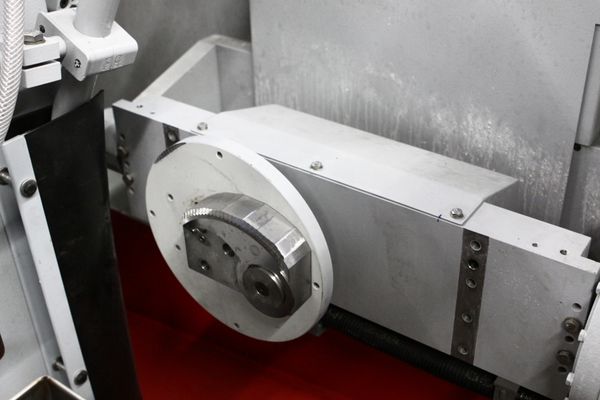Berger Blog
Grinding and serrating of machines knives in the age of industry 4.0
Grinding and serrating of machines knives in the age of industry 4.0

Schleifen + Polieren (4/2018)
The production of machine knives requires the adherence of close tolerances to guarantee a good quality of the final product. CNC technology and robot controlled feeding technology are employed as well as measuring and control technology.
For the production and finishing of machine knives various mechanical production processes are applied. In this regard, the use of different grinding and serrating methods are of great importance. With 250 mostly CNC controlled grinding machine types for the machining of strips and pieces, the Berger Gruppe is a leading company worldwide in the field of grinding technology.
The grinding machines are designed for different machining processes.
With four contour giving axes and a tool axis, flat bevel grinding machines produce a surface, a bevel and/or a radius grinding at pieces with complex geometries. Depending on the workpiece size the machines are equipped with grinding wheels of different diameters. Due to the combination of grinding wheel axis for wear compensation and an additional infeed axis for workpiece grinding, the machine offers high flexibility combined with high rigidity.
The machines can be equipped with sequentially working robots which means that machine knives can be ground fully automatically.
Peripheral grinding machines are designed for scalloped and serrated grinding of machine knives. By means of interpolation of the Y- and X-axes the grinding machine produces any grinding angle. Specially designed peripheral grinding machines working with seven CNC axes machine workpieces with a maximum length of 1,800 mm (5.9 ft).
Knives with a straight or serrated blade are ground at programmable angle. The tooth shapes are programmed user-friendly via menu. In this way it is possible to grind quickly nearly all tooth profiles, especially pointed shaped or scalloped serrations - even for small quantities or prototypes.
A central control connected with the grinding machine interacts both with an automated feeding technique and workpiece and tool magazines.
A bus-based detection of sensor signals is integrated into the grinding machine. Signals such as temperatures of coolant lubricant, engine load, AE signals for spindle control or air pressure are detected and processed by intelligent sensors and actors so that decisions concerning resource control can be taken and implemented.
The process data are entered by a specially designed interface to optimize production processes and to recognize process interdependencies. In that way, downtime and setup time are optimized and capacity planning is improved.

Peripheral grinding machine WSL-CNC for scalloped and serrated grinding of machine knives
